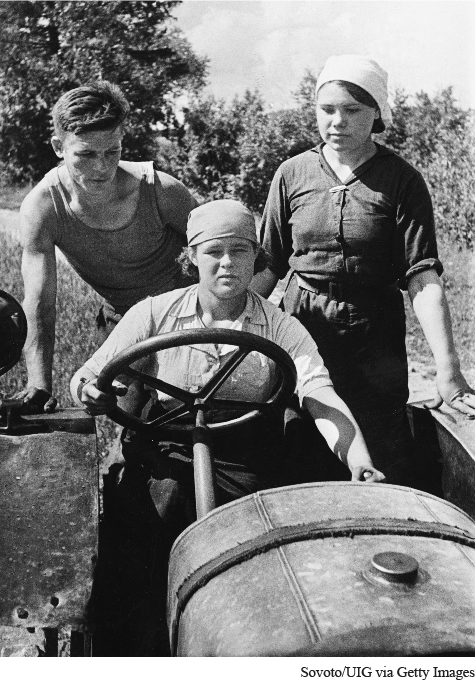Communist Feminism

Among the earliest and most revolutionary actions of these new communist regimes were efforts at liberating and mobilizing women. Communist countries in fact pioneered forms of women’s liberation that only later were adopted in the West. This communist feminism was largely state directed, with the initiative coming from the top rather than bubbling up from grassroots movements as in the West. In the Soviet Union, where a small women’s movement had taken shape in pre–World War I Russia, the new communist government almost immediately issued a series of laws and decrees regarding women. These measures declared full legal and political equality for women; marriage became a civil procedure among freely consenting adults; divorce was legalized and made easier, as was abortion; illegitimacy was abolished; women no longer had to take their husbands’ surnames; pregnancy leave for employed women was mandated; and women were actively mobilized as workers in the country’s drive to industrialization. Addressing a Congress of Women Workers and Peasants, Lenin declared: “Root out old habits. Every cook must learn to rule the state.”2
Guided Reading Question
▪CHANGE
What changes did communist regimes bring to the lives of women?
In 1919, the party set up a special organization called Zhenotdel (zhen-ut-DEL) (Women’s Department), whose radical leaders, all women, pushed a decidedly feminist agenda during the 1920s. They organized numerous conferences for women, trained women to run day-care centers and medical clinics, published newspapers and magazines aimed at a female audience, provided literacy and prenatal classes, and encouraged Muslim women to take off their veils. Alexandra Rodionova, a former streetcar conductor who had played an active role in the revolution, recalled the impact of participation in Zhenotdel: “This former illiterate working girl had been transformed into a person, powerful with the knowledge of her own rights, a consciousness of responsibility for everything happening in the country.”3 Much of this agenda encountered opposition from male communist officials and from ordinary people as well, and Stalin abolished Zhenotdel in 1930. While it lasted, though, it was a remarkable experiment in women’s liberation by means of state action, animated by an almost utopian sense of new possibilities set loose by the revolution.
Similar policies took shape in communist China. The Marriage Law of 1950 was a direct attack on patriarchal and Confucian traditions. It decreed free choice in marriage, relatively easy divorce, the end of concubinage and child marriage, permission for widows to remarry, and equal property rights for women. A short but intense campaign by the CCP in the early 1950s sought to implement these changes, often against strenuous opposition. The party also launched a Women’s Federation, a mass organization that enrolled millions of women. Its leaders, however, were far less radical than the Bolshevik feminists who led Zhenotdel in the 1920s. In China, there was little talk of “free love” or the “withering away of the family,” as there had been in the USSR. Nevertheless, like their Soviet counterparts, Chinese women became much more actively involved in production outside the home. By 1978, 50 percent of agricultural workers and 38 percent of nonagricultural laborers were female. “Women can do anything” became a famous party slogan in the 1960s. (See Working with Evidence, Source 21.3.)
Still, communist-